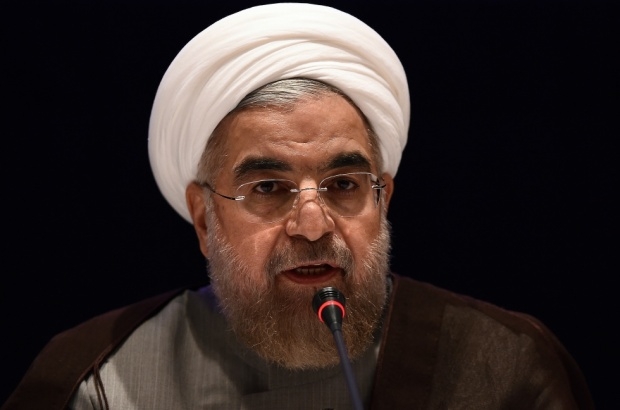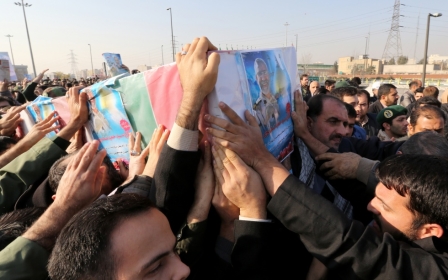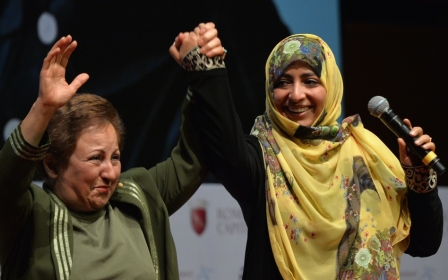What Iran wants

On Christmas Eve, Iran’s Supreme Leader took to twitter to score some points against America. Hashtaging #Ferguson and #Gaza, he tweeted that if “Jesus were among us today he wouldn't spare a second to fight the arrogants&support the oppressed.” He also shot off a few tweets hashtaging #BlackLivesMatter. Four days later, he commemorated the Wounded Knee massacre by asking on Twitter if killing millions of Native Americans and enslaving Africans constitute “American values”?
Coming in the midst of Iran’s negotiations with the US and the P5+1 (the Permanent members of the UN Security Council plus Germany), President Barack Obama ending decades of enmity with Cuba, as well as peculiar “non-coordination” between the US and Iran against Islamic State fighters in Iraq, Khamenei’s tweets raises the question: What does Iran really want with America?
After Havana, does Tehran want to be next? Does it seek to end the enmity with America, or just lower its intensity? Or do the leaders in Iran fear not having America as an enemy?
Many in Washington have argued that Iran is addicted to its enmity with the US. “It’s a pillar of the revolution,” one often hears. Coming to terms with America would be the end of the Islamic Revolution. Yet, many of those voices also categorically rejected the idea that Iran would engage the US in bilateral negotiations, have its foreign minister become email pals with Secretary John Kerry, or have its President tweet Happy Rosh Hashanah greetings to Jews worldwide.
A simplistic, one-dimensional (mis)understanding of the Iranian leadership generated crude and ultimately erroneous predictions of Iranian behavior. The surprising flexibility of the Iranian decision-makers could not be captured since Washington’s read of Tehran was surprisingly inflexible.
Rather than categorical rejection of ties with the US or open desire for such a relationship, the truth may simply be that Tehran itself did not know until recently what path to pursue in regards to Washington.
About three years ago, a debate emerged within Iran’s security establishment on redefining Tehran’s relations with the Great Powers, particularly the US. A realization had occurred that due to geopolitical changes in the region, some form of a relationship with Washington was necessary – the question was the parameters of that relationship and the manner it would come about.
It was an intense debate; perhaps the most important and difficult one the leaders of the Islamic Republic have experienced since the Iraq-Iran war. With the fast changing situation in the region, the debate never reached a finale. There are some indications, however, that Tehran has come closer to a conclusion in the past few weeks. On December 17, the secretary of the Supreme National Security Council, Ali Shamkhani, told the Financial Times that even if a nuclear deal is reached, the US and Iran can still not cooperate in the region. But, Shamkhani explained, the two “can behave in a way that they do not use their energy against each other.”
This is a critical statement that sheds light on where the debate in Tehran is tilting. Rather than partnership, Tehran is offering a truce.
A top Iranian official explained it to me a year ago: Iran’s relationship with the United States would at best be a cordial rivalry, not an alliance or partnership. But operative term is cordial, not rivalry. Just as Shamkhani hinted, contrary to their past behavior, the US and Iran would not be challenging or undermining each other. There can even be tactical and strategic collaboration between the two, although Tehran likely will prefer to keep that behind-the-scenes. Or as in Shamkhani’s interview, flat out deny that collaboration is in the cards.
But why can’t Tehran shred its past objections and opt for a less conflicted approach to America? This is where the value of rivalry comes in. Iran does not aspire to be just a normal power. Both the current regime, as well as the regime of the Shah, seeks a strong regional leadership role. While the Shah used Persian nationalism internally, and an alliance with the US and Israel externally to become the undisputed power of the region, the Khomeini regime’s instruments have been political Islam and rejection of America’s presence in the region.
If Tehran joined the American camp, it would become a normal power whose influence would be determined solely by its economic and military prowess. This wouldn’t take Iran very far, Tehran fears. It would at best be a second tier state, below the United States.
By keeping its rivalry with the US alive and challenging America’s vision for the region, Iran would catapult itself into a higher level of regional influence, Tehran believes. By positioning itself as a rival, Iran would approach the US as an equal, rather than compete with Israel, Turkey, and Saudi Arabia for the role of America’s most valuable proxy in the region.
Keep this in mind next time Ayatollah Khamenei takes to twitter to challenge the US or point out America’s double standards. In an era where the US and Iran may secretly collude against Sunni Jihadists, where trade between the two may flow once again, and where quiet collaboration between the two may become commonplace to stabilize regional hotspots, the optics of rivalry must desperately be kept alive where it matters the most. On twitter that is.
-Trita Parsi is the 2010 recipient of the $200,000 Grawemeyer Award for Ideas Improving World Order. He is an award-wining author of two books, Treacherous Alliance - The Secret Dealings of Israel, Iran and the US (Yale University Press, 2007) and A Single Roll of the Dice - Obama's Diplomacy with Iran (Yale University Press, 2012).
The views expressed in this article belong to the author and do not necessarily reflect the editorial policy of Middle East Eye.
Photo: Iranian President Hassan Rouhani (AFP)
Middle East Eye propose une couverture et une analyse indépendantes et incomparables du Moyen-Orient, de l’Afrique du Nord et d’autres régions du monde. Pour en savoir plus sur la reprise de ce contenu et les frais qui s’appliquent, veuillez remplir ce formulaire [en anglais]. Pour en savoir plus sur MEE, cliquez ici [en anglais].





